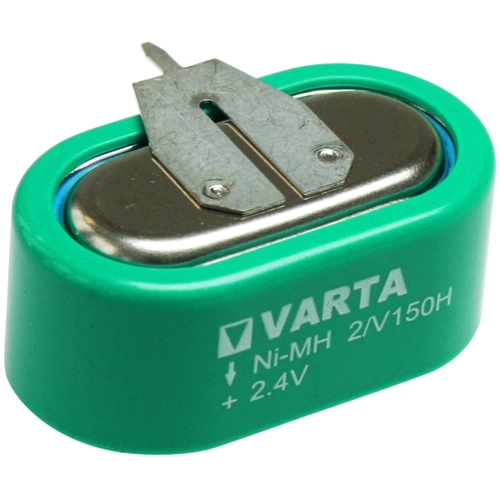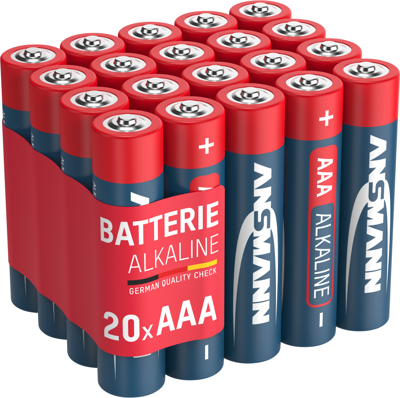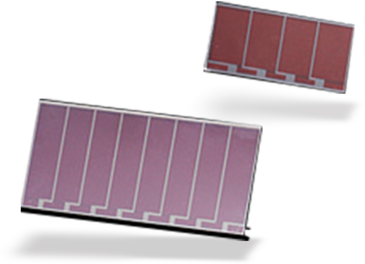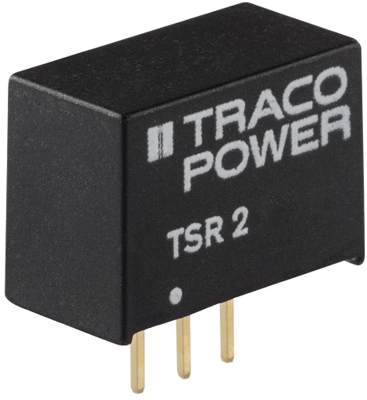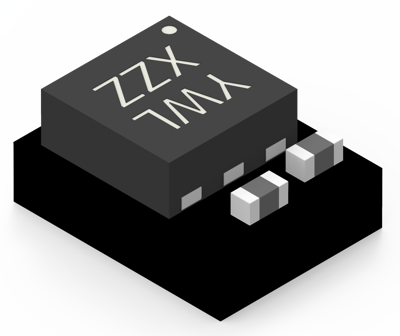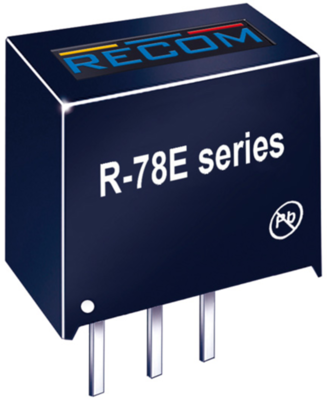
Understanding the Flow of Electricity: Everything You Need to Know About Direct and Alternating Current
Charging a smartphone, switching on a lamp or driving an electric vehicle – we are constantly surrounded by electricity, whether at home, at work or on the road. This electricity is mainly supplied in two forms: direct current (DC) and alternating current (AC). But have you ever wondered what the difference is between these two fundamentally different types of electricity? We give you an overview of the most important properties, areas of application, advantages and disadvantages.
Direct current vs. alternating current: the main differences at a glance
The main difference between direct current (DC) and alternating current (AC) is the direction of movement of the electrons. While the electrons flow in one direction in direct current, they change direction periodically in alternating current. But how does the difference in the direction of the current actually arise?
What is direct current (DC)?
Direct current (DC) is the type of electrical current in which electrons flow in only one direction – from the negative pole (cathode) to the positive pole (anode). The voltage can either remain constant (constant DC voltage) or vary (pulsating DC current). However, the polarity always remains unchanged.
Direct current is usually generated by batteries, rechargeable batteries, or solar cells. With these voltage sources, the polarity does not change, so the electrons always flow in the same direction. A typical example of direct current is the energy provided by rechargeable batteries in portable devices such as laptops or smartphones.
What is alternating current (AC)?
Alternating current (AC) is the type of electrical current in which electrons regularly change direction as the polarity of the voltage sources changes periodically. The frequency, measured in Hertz (Hz), indicates how often this change of direction occurs per second. In Europe, the frequency in a typical household power grid is 50 Hz.
Alternating current is generated by generators. These convert mechanical energy into electrical energy by using a rotating motion that generates a magnetic field. If a conductor loop or coil rotates in this magnetic field, alternating current is generated. For high power requirements, three coils are used that rotate within the magnetic field and generate three-phase alternating current.
A brief explanation of the symbols for DC and AC
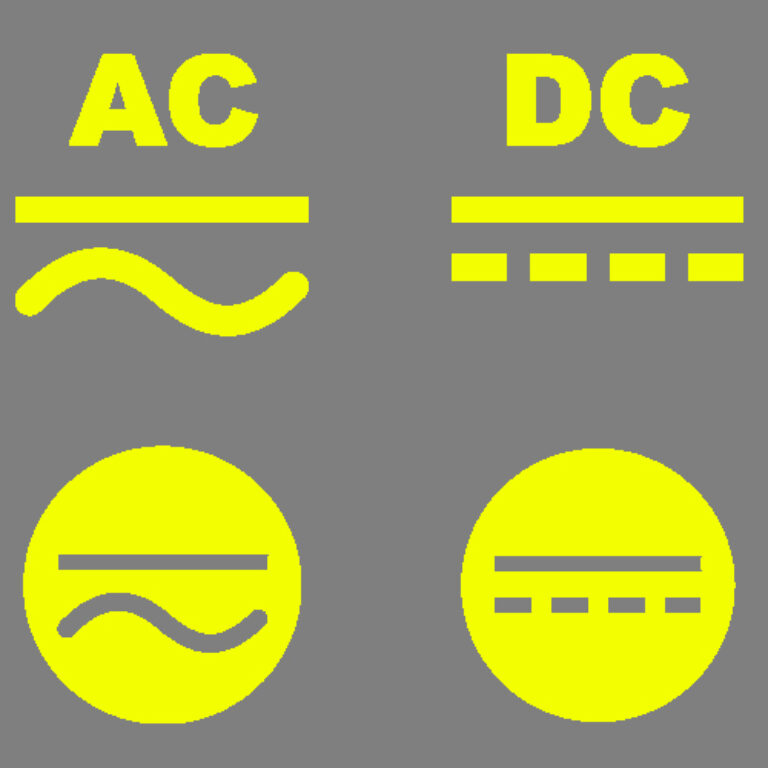
Knowing the symbols for direct and alternating current is essential for understanding circuit diagrams and working with electrical systems. They help to identify the type of current flowing in a particular part of the circuit.
- Direct current (DC): The symbol for direct current consists of a dashed line.
- Alternating current (AC): Alternating current is represented by a wavy line.
Areas of application of DC and AC
Direct current (DC) and alternating current (AC) differ fundamentally in the way they conduct electrons. These differences have far-reaching implications for the application and efficiency of electricity in various areas:
- Direct current: Electronic devices such as laptops and smartphones use direct current. Electric vehicles, which are becoming increasingly important, also use batteries that supply direct current.
- Alternating current: Household electricity is mostly supplied in the form of alternating current – most everyday appliances are operated with it. In industry, machines and production plants are also supplied with alternating current.
Direct and alternating current in the home
Our household sockets supply alternating current at a voltage of 230 volts. This current is used for many common everyday appliances such as laptops or televisions, with a power supply unit converting the alternating current into direct current. For appliances such as electric cookers, which require more power, three-phase alternating current at 400 volts is used.
The power cables used differ depending on the voltage. For 230-volt devices, cables with three conductors are used: phase, neutral and earth. Power cables for 400-volt devices also contain three phase conductors.
Advantages and disadvantages of direct and alternating current
The decision between direct current (DC) and alternating current (AC) depends heavily on the specific requirements and areas of application. Both types of current have their strengths and weaknesses, which have different levels of importance in different contexts.
- Energy transmission and distribution: Direct current is efficient for short distances and is well suited for electronic devices and storage solutions such as batteries. Alternating current, on the other hand, is ideal for transmission over long distances, as it can be transported with minimal losses.
- Efficiency and energy losses: Direct current has the advantage of a stable voltage, which is why it is the ideal solution for many electronic applications. However, alternating current can be easily converted into different voltage levels by transformers, which makes its transmission over long distances very efficient.
- Safety aspects: AC can cause electromagnetic interference and requires a more complex infrastructure, including transformers. DC systems are simpler, but voltage conversion can quickly become a problem.
Future trends: Why direct current is becoming increasingly important
With the growing importance of renewable energies and the development of new technologies, direct current is continuing to gain in importance. It plays a crucial role in the storage and use of solar energy, in the charging infrastructure for electric vehicles, and in Industry 4.0. However, alternating current will remain the preferred method for distributing electricity over long distances and supplying households with electricity for the time being. In detail:
- Electric mobility: In electric mobility, direct current is crucial because electric vehicles rely on batteries that store direct current. The charging infrastructure for electric vehicles therefore requires solutions that can efficiently utilise direct current.
- Renewable energies: DC also plays an important role in renewable energies. Photovoltaic and wind power plants initially generate DC, which is then converted into AC so that it can be fed into the power grid.
- Industry 4.0: In modern industry, also known as Industry 4.0, DC is gaining in importance, especially in automation and in terms of the energy efficiency of production processes. DC enables more precise control and energy efficiency, which leads to cost savings and higher productivity.
An energy supply that can do without the conversion between alternating and direct current saves a significant amount of energy and costs. That is why a supply of direct current could become a sensible alternative in the future.
DC and AC – together strong!
Both direct current and alternating current are currently indispensable for our electricity supply. In this context, Bürklin Elektronik offers high-performance components from top manufacturers: from various cables and wires to high-quality rechargeable batteries and batteries. Find out more about our products in our online shop now! Our experts will be happy to provide you with further information.

